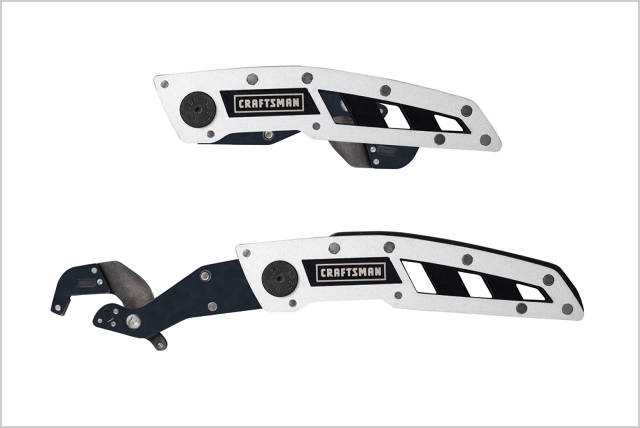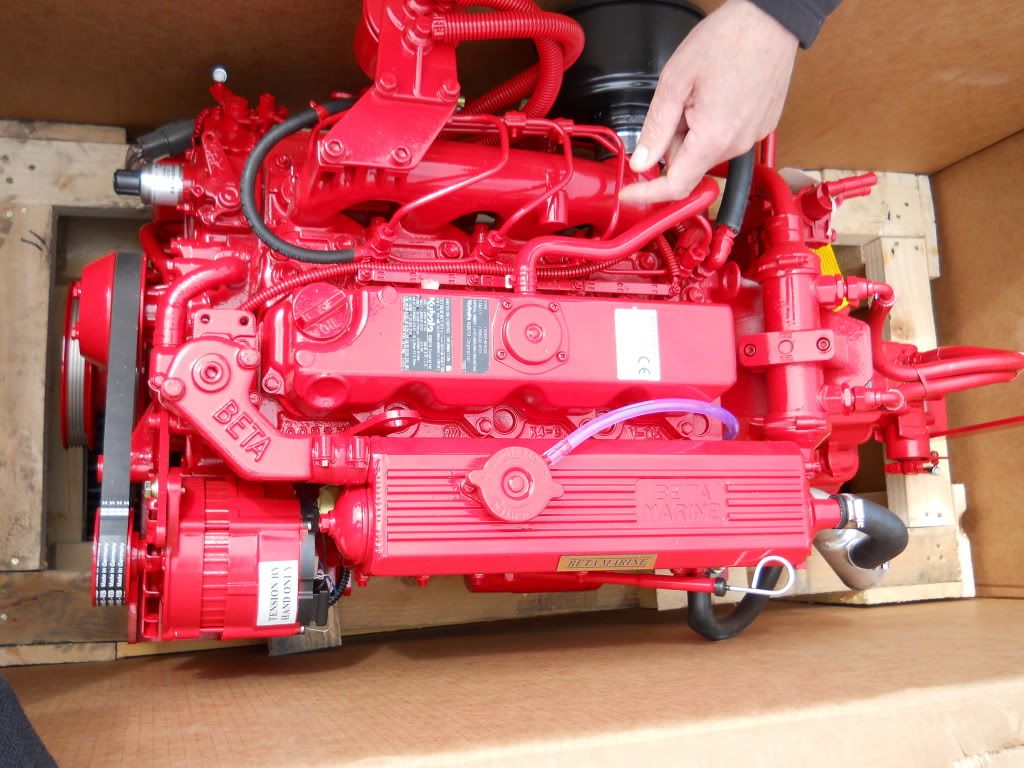Something my American friends are not always used to dealing with is the worldwide preference for metric measurement. The
SAE standarized Imperial (or "American", but it's British in origin) gauged and standardized tools and fasteners in the early days of automotive production, and knowing that the 3/8" nut on that new 1910 Stanley Steamer would match the 3/8" bolt from Mr. Ford's outfit no doubt made the assembly line and mass production run more smoothly. While there have been many variant fasteners and tools of unusual sizings before and since the widespread adaption in North America of SAE Imperial sizings...the
British Whitworth system, still used in U.K. plumbing, comes to mind...
the rest of the world uses metric tooling.
 |
| And this is only the beginning... |
Now, unless you own, in addition to a Canadian boat with a Japanese diesel, a 1950s British sportscar, you will only be required to carry two complete sets of wrenches, sockets, fasteners, washers and nuts if you are restoring a boat. Get that? Not three. This is not a huge leap for a Canadian boat refitter, as Canada is the homeland of the
Robertson screw and bolt, a type very popular indeed in Canada, but somewhat obscure elsewhere, that requires, in addition to the
more widespread flathead/slot and Phillips/"cross" screwdrivers and bits, a set of Robertson drivers for hand and electric tools. I also have a bunch of
Torx bits and drivers, which remain untouched and pristine as I have yet to enter one in the wild outside of the inside of a computer case...and even then, seldom.
 |
| But wait, there's more! |
Allen or hex keys also come in metric and SAE sizings, and while I like them in principle, they represent another pair of tool sets and socket drivers I have had to acquire and, inevitably, must bring along. I don't resent this, per se, but when I think that I could disassemble a German engine in a French boat with only the tools I could pack in the most compact of tool boxes, it is to weep. And to list slightly to port with the weight of all these bits and pieces.
 |
| There they are, neatly organized inside of under the vise grips. I must have four sets of these between two boats and my house's garage |
All this came into play yesterday on the engine. As the Drive to Drive continues, I am becoming familiar with the largely metric Allen screws, drain plugs, nuts and bolts of my Kubota engine. This (the "largely metric" part) makes sense, as it's a Japanese diesel marinized by an English company, and England, despite the Whitworth and indeed "Imperial" provenance, went officially metric in the '70s, even if that means, as here in Canada, that they are more or less getting around to it now. Proximity to the rest of Europe helps in Britain's case, as proximity to the States,
noted disdainers of anything the French devised, doesn't help Canada's attempts to leave Imperial/SAE measurements in the historical dustbin. Net result is that I have to carry two more or less full sets of hand tools that drill, screw, lever or tighten/loosen. If it's a specialty item, like a really big socket or a prop puller, that's more weight and expense, but if I really need to pull off the prop, I'll need both.
 |
| Useful...to a point. |
Occasionally, I'll find a tool/gadget like the adjustable rachet wrench socket pictured above, or
a clever rethink such as this:
 |
| ...or to another point... |
...which makes me glad that industrial design students exist. Sometimes I even buy them. But there's no obvious, in my experience, replacement for a deep socket that can fit a buried bolt head attached to a nice long handle. So the embarrassment of hand-tool riches is wanted on the voyage.
 |
| Throttle linkage linked. Vroom. |
Which brings us, inevitably, to yesterday. I hooked up the throttle and gear shifter linkages, an act I consider symbolic of progress, although it's just the latest step. The nut on the throttle arm was a 10mm nut, but as it was painted, I assumed it was something SAE. Nope!
 |
| This seems to work in that the shifter lever is shifting, but I think I should reverse that little bored-out piece. |
So I was well-warned when I repeated the hook-up for the shifter on the hydraulic gearbox. As can be seen, apart from the particle-covered engine, which will be wiped down before first fire-up, there's an unappealing offset to the path of the
Morse/Teleflex-style shifter cable. This photo makes me think I could just put the silvery cap on the little universal joint on the inner, rather than the outer, side of the shifter arm and straighten the hell out of that run. I have no evidence it's an incorrect installation; the engine transmission shifter arm came that way...but my developing instinct makes me think I need to get out, again, the metric spanners.
Which, of course, I have to hand.
 |
| Yeah, we'll get back to this level of shiny. |












4 comments:
Ha. Tool porn. You men are so predicatable. ;)
I bought a 2014 Ford van and found out that it has at least some metric bolts and nuts on it. :((
Cidnie, would you prefer your husband drooled over something more traditional? Maybe not! The truth is that I owned a hammer and a screwdriver until age 38 when I got an old boat and an older house in the same 12 months. Since then, it's true, I have chronically abused my wallet in quest of the perfect tool.
Bill, the "just in time" process of today's car assembly means that parts arrive from all over the planet and there's no guarantee even that domestic components will be one standard or another...even from the States. A friend of mine works at a Chrysler plant near here and has said "you just learn to eyeball things and to always keep both snap-on ends near to your air tool." I won't outlive non-metric standards, but my son might, even here in North America. Until then, it's two sets and the careful avoidance of British vintage autos.
Post a Comment